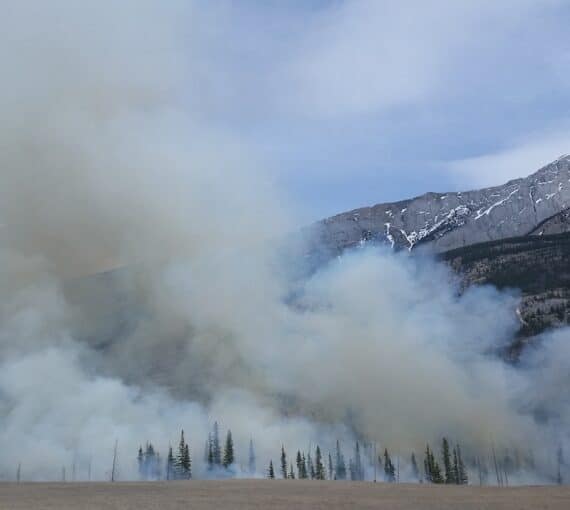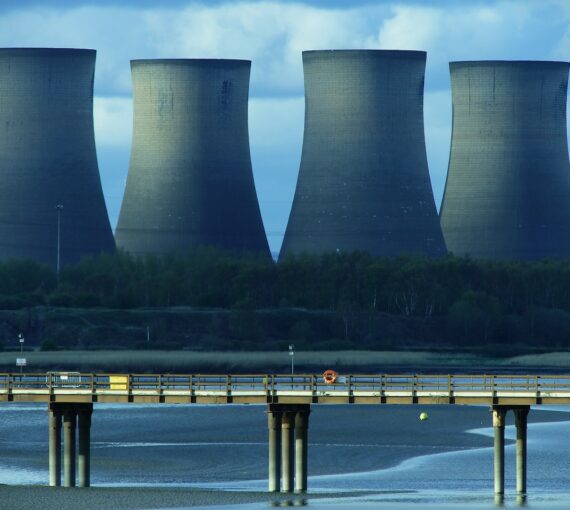
Heat pumps will save you money while protecting the climate and air. (Photo: Niklas Morberg via Flickr)
It sounds too good to be true: a way to efficiently heat and cool your space, save money, reduce indoor and outdoor pollution and do your part in the global effort to curtail climate change! Heat pumps may not seem exciting, but they’re quickly growing in popularity as the world shifts away from expensive, polluting, climate-altering coal, oil and gas.
Many homes and buildings are heated by burning oil or gas in furnaces and distributing the heat through ducts and vents, or burning fuels to heat water in boilers, and circulating it as hot water or steam through radiators. But burning stuff for power and heat is in many ways old technology we need to leave behind.
Heat pumps don’t generate heat; they just move it around. That makes them super efficient — far more even than systems that use electricity rather than gas or oil to generate heat.
Heating and cooling buildings causes a large percentage of global emissions, so heat pumps can make a significant difference in the effort to curb global warming — especially as electricity systems switch to renewable sources, technology improves and buildings become more energy efficient. They also save money because they don’t rely on costly fuels and use less electricity than other systems.
Heating and cooling buildings causes a large percentage of global emissions, so heat pumps can make a significant difference in the effort to curb global warming — especially as electricity systems switch to renewable sources, technology improves and buildings become more energy efficient.
With technology similar to that of a refrigerator or air conditioner, heat pumps take heat from outside air, ground, water, industrial waste or other sources, and transfer it to the building interior and/or hot water tank — and reverse the process to cool, avoiding the need for separate heating and cooling systems. There are a number of different kinds of heat pumps, including ducted and ductless, and large industrial ones that can supply district heating.
The basic operation is similar in most: a cold gas, or refrigerant, flows through coils in an outside condensing unit, which absorbs heat energy, even in cold temperatures. A compressor pressurizes the warmer gas into a hot gas or liquid, which is pumped through coils inside. Heat is released through the home or building as the refrigerant cools and condenses. The cooled refrigerant then passes through an expander, lowering the pressure and temperature, and the cycle repeats.
Although refrigerants are greenhouse gases, preventing leaks, recycling the gas and using better ones can reduce their risk. Even with current refrigerants and technologies, compared to gas boilers, heat pumps can reduce greenhouse gas emissions by 20 per cent where electricity is from non-renewable sources and up to 80 per cent with clean electricity.
Heat pumps’ many advantages will increase as technologies improve and the electricity used to run them shifts more and more to renewable sources. As an International Energy Agency report points out, they’re three to five times more energy efficient than gas boilers, and “reduce households’ exposure to fossil fuel price spikes, which has been made all the more urgent by the ongoing global energy crisis.”
Heat pumps’ many advantages will increase as technologies improve and the electricity used to run them shifts more and more to renewable sources
As an added bonus, growth in heat pump manufacturing, installation and maintenance also creates employment.
It’s no wonder heat pumps are becoming so popular. Temperature and weather events are becoming increasingly volatile and extreme as the world warms, and more people worldwide need better indoor heating and cooling. According to the IEA, 60 per cent of buildings in Norway and 40 per cent in Sweden and Finland have them. Global sales grew by 15 per cent in 2021 — by 35 per cent in the European Union. Those numbers are growing fast. China is the largest market for new sales, and North America has the most homes with heat pumps.
Although they pay for themselves over time with the money saved, the initial cost of buying and installing heat pumps can put off many home and building owners. That’s why governments in many countries, including Canada, provide incentives that can make purchase and installation costs similar to gas boilers. The Inflation Reduction Act recently passed in the U.S. includes rebates of up to $8,000.
The fossil fuel industry is putting enormous resources into campaigns to keep people hooked on (mostly fracked) methane, which they call “natural gas.” Don’t buy it. Heat pumps will save you money while protecting the climate and air. Like many climate solutions, heat pumps offer numerous advantages over fossil fuels, including cost savings, greater efficiency and job creation.



